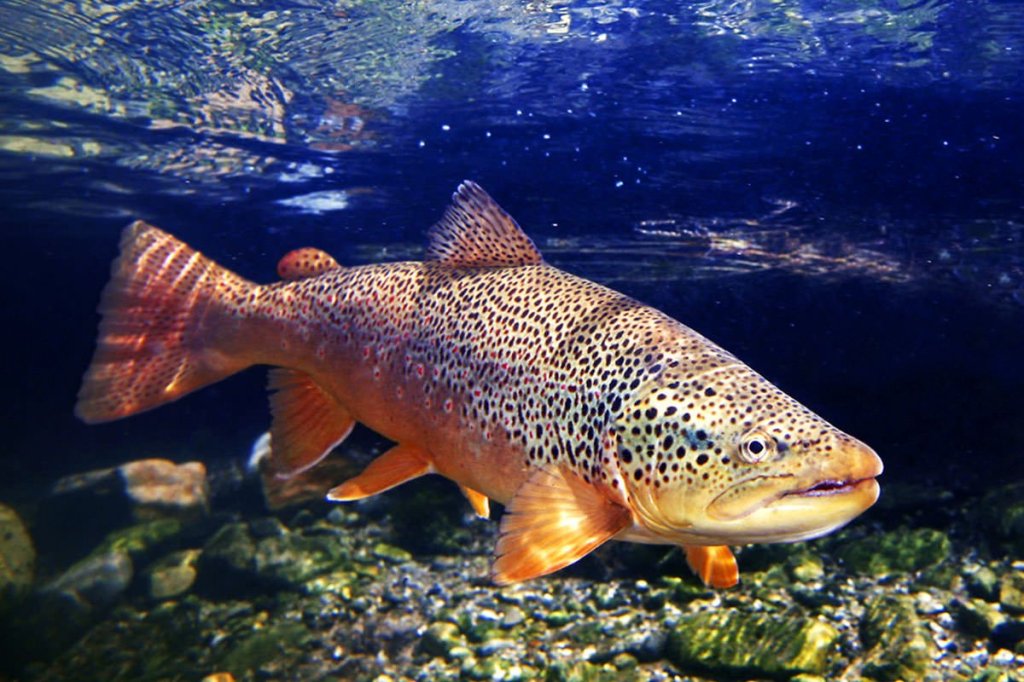Seeing is Believing: How one Trout Can Drive you Insane
If you’re like me, you read a great deal about the fish you’re chasing in magazines, blogs, social media posts and even (gasp!) actual books. In the past few years I’ve developed an increasing interest in trout, where they live, how they behave, what they’ll eat, how they move seasonally and why they do what they do.
It’s mostly because I’m living in Upstate New York, and salmon and steelhead aside, trout captivate the imaginations of more fishermen here than just about any species. Now, since we’ve got great smallmouth water, giant pike and a very underrated muskie fishery in the St. Lawrence, you could make a compelling argument for a number of species that’d rank first in the minds and hearts of central New Yorkers… But, when most people think New York, great trout water comes to mind. We’ve got the Delaware, The Beaverkill, the AuSable, the Neversink, The West Canada and the list goes on.
I was fishing a stream called the Oriskany Creek yesterday, which has the added benefit of a decent smallmouth fishery, when I saw a fish I’ll be hard-pressed to forget.
Have you had this happen: You see a specific fish, and just knowing it’s there, in water you were wading through, gnaws at you? You think: “If I could forget that fish existed, I’d be perfectly contented with the smaller fish I was catching, hell I might even explore new water happily… but no. Now I know that specific fish is in that stretch, and it is the fish by which all other fish I catch there will be judged.”
This was a brown trout that was behaving in a way that was almost perfectly textbook. It was holding in a current seam and rising, periodically, to take flies off the surface. The hits weren’t subtle enough that you might miss them, but they weren’t audacious enough that you’d notice unless you saw one while studying the water. But once you saw one, you could watch the specific seam the trout was in and see it rising, perhaps every 20 seconds or so, to sip another bug.
That sight in of itself would have been kind of a cool way to witness nature in action: It’d just be a real-life realization of the scene we play out in our heads when rigging up a fly rod.
But it was the size of this trout, which veered out of the seam and close enough to me for a glimpse, that’ll just haunt the bejesus out of me to be perfectly honest with you. I will not be one of those guys who tells you he saw a _ _ – inch trout because honestly, who among us can guestimate the length of a trout that’s underwater at 20 yards?
I do not know how big this fish was, only that it was larger than the biggest trout I’ve ever landed, which would have it pushing 22 inches at the very least.
So this 20-plus inch trout sat in a current seam, rising periodically to take flies off the surface and it had absolutely no interest in the small lure I was throwing.
To witness such a large fish in a body of water that is never deeper than six feet or wider than 30, feeding on one specific bug, paying absolutely no mind to a lure that has fooled dozens of his smaller brethren, is to really get an appreciation for what incredible creatures larger wild brown trout are. This fish was keyed into a specific hatch, eating his fill in one seam, at the perfect time of night, and if he saw my Phoebe Wobbler, he dodged it without a second thought dozens of times as he sipped his flies.
The next day I was at The Troutfitter in Syracuse, N.Y. talking flies and filling a cup. Lesson learned.




 It’s the circumstances behind a catch that make it memorable
It’s the circumstances behind a catch that make it memorable








 As we embark into February, many anglers are thinking: “This is as far from the beauty of short-sleeve, carefree, see-your-reflection-in-the-water fishing as we can get without coming back.” And you know what? You’re right.
As we embark into February, many anglers are thinking: “This is as far from the beauty of short-sleeve, carefree, see-your-reflection-in-the-water fishing as we can get without coming back.” And you know what? You’re right.
